In this issue:
– Keeping your marbles: How to take action now to prevent dementia
– A sprinkle of insight: the scoop on salt
– Snack attack! Ten healthy snack ideas for guilt-free nibbles
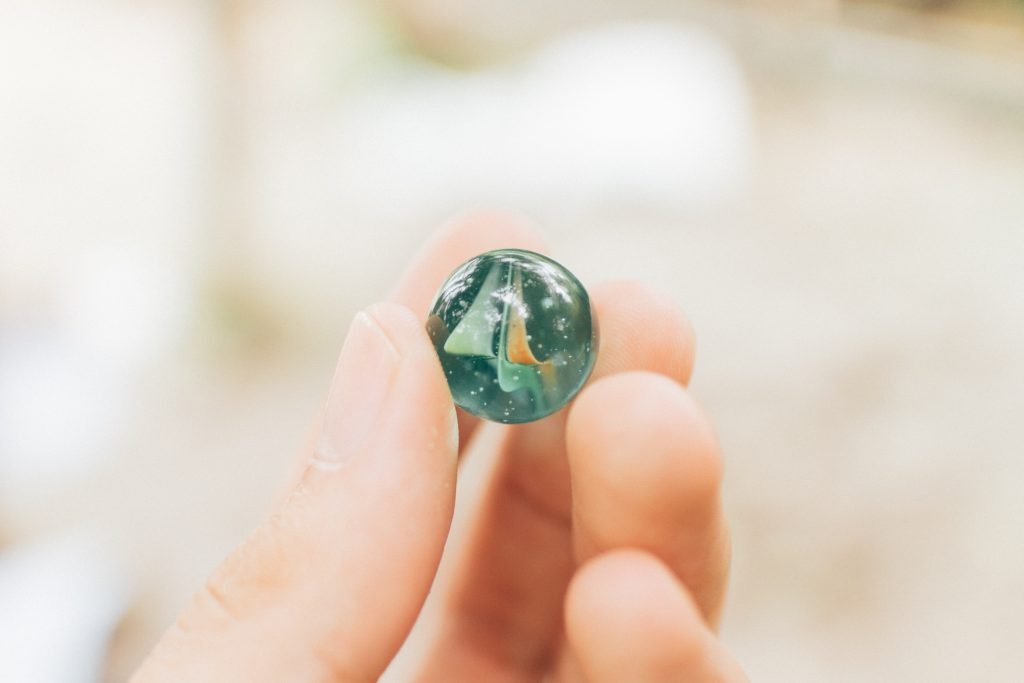
Keeping your marbles
Nobody wants to lose their mind. But for women, dementia, including Alzheimer’s disease is now the no. 1 killer in England and Wales, and men aren’t far behind. “I’m getting old”, “I’m having a ‘senior moment’” – the language we use when we have memory lapses and momentary confusion is telling: popular culture would have us believe that dementia is a natural part of ageing and there is not much we can do about it. Even the latest, much-hyped Alzheimer’s drug, Lecanemab, which is being hailed as revolutionary, actually showed only a difference 0.45 of a point between the study group and the placebo group (1.21 vs 1.66 point increase) on the 18-point Clinical Dementia Rating scale in clinical trials. This barely clinically significant result was deemed enough to bring it to market and rubber-stamped by the relevant authorities, despite the drug causing brain swelling and haemorrhage in 1 in 5 patients! Although there was a notable reduction in amyloid plaques in the people taking the drug in the trial, this actually made only a very small difference to the progression of the disease. In fact, some researchers believe that the decades of drug development based on amyloid plaques is barking up the wrong tree, and that we should be looking more at why those plaques form in the first place – namely at a specific autoimmune process in response to brain trauma or bacteria entering the brain.
There is certainly an urgent need for a better way. But to find solutions, we need to ask the right questions. What are the root causes of dementia, and can they be mitigated?
A report by the Lancet Commission on dementia prevention and care suggests that 12 risk factors combine to make dementia up to 40% preventable.
The best time to plant a shade tree was 30 years ago. But the next best time is now! Wherever you are on the health continuum, it’s never too late to take action, and the choices we make now affect what state we’ll find ourselves in 20-30 years down the line. For example, studies show that physical activity is protective in midlife, and also that if you have a high BMI in mid-life, you may have a higher risk of getting dementia in old age. This may be because putting on weight is usually associated with excessive blood sugar levels and metabolic syndrome, which puts you at risk for so many health problems, including Alzheimer’s – which is increasingly being termed “type 3 diabetes” by scientists.
Aside from dysregulated blood sugar, other risk factors highlighted by the Lancet commission include smoking, air pollution, stress and depression. Surprisingly, hearing loss is one of the biggest risk factors, but is mitigated by wearing hearing aids, which suggests that lower cognitive stimulation through hearing loss may be at play.
What about alcohol? The research seems to indicate that drinking more than 21 units increases your risk of dementia, but that not drinking alcohol at all also increases your risk! Light to moderate drinking of less than 14 units a week has been associated with a decreased risk of dementia, although this may have something to do with the fact that drinking is usually connected to socialising, and people with stronger social networks tend to live longer and have 60% lower risk of developing dementia than people with weaker networks or disappointing social relationships.
These lifestyle factors are all well and good for preventing dementia, but the elephant in the room when it comes to medical journal reports such as the one in The Lancet is nutrition. The rise in dementia has coincided with a general decline in the nutritional quality and content of the food we eat. In fact, our bodies are being bombarded with the antinutrients that come with processed food, while at the same time being increasingly depleted in essential vitamins, minerals and plant nutrients. The medical profession tends to steer clear of advising on nutrition for prevention of dementia, but the evidence is clearly there.
Take vitamin D3, for instance – dietary sources are few, and this is a hormone that is mainly made in the skin as a result of being in the summer sun, and most of us in Europe and the USA are deficient. A vitamin D deficiency may also increase the risk of developing dementia according to a new study published in Alzheimer’s & Dementia. The study followed 290 elderly individuals until their death. The participants had no dementia when they were enrolled into the project. Their brains were examined after they died, and researchers found that higher levels of vitamin D in the brain were associated with a 25-33% reduced risk of developing Alzheimer’s.
It has long been known that B vitamins can help prevent dementia and improve cognition, and in fact, a B-12 deficiency is sometimes mistakenly diagnosed as dementia. Higher intake of omega-3 fats has also been associated with better brain health. But the really significant results come when these two are combined. Recent research has shown an astounding 73% reduction in brain shrinkage (compared to a mere 2% with anti-amyloid plaque drugs) when people had good levels of both B vitamins and omega-3 fats. On the same Clinical Dementia Rating scale on which Lecanemab racked up its 0.45 of a point improvement, the combination of B vitamins and omega-3s saw an impressive 1.5-point improvement.
If we want to keep all of our marbles into old age, all the evidence is telling us to get rid of processed food, refined seed oils and refined grains and flours, and switch to a Mediterranean diet with plenty of oily fish, colourful vegetables and fruit (providing phytonutrients and antioxidants that support brain health), some organic pasture-raised meat, and lashings of olive oil (and olives), and perhaps washed down with a glass of good quality red wine in the company of good friends. This nutritious and nurturing diet will also mean that we will be taking fewer drugs (if any) in old age, which we all want, don’t we? This is especially important when it comes to cholesterol-lowering drugs, given the research that shows that low levels of LDL cholesterol in the blood are associated with dementia (Zhou et al., 2018). Now re-read that last sentence and let it sink in! And in the age of lower nutrient values in our food, and with nearly 57% of the average Brit’s calories coming from ultra-processed food (in the US, it’s >60%), supplementation of B-vitamins and fish oil plus a broad spectrum of essential vitamins and minerals is sadly more necessary than ever. It’s a form of health insurance – and well worth the investment!
The scoop on salt
How many times have you seen a headline demonising salt? Google brings up around 1.4 billion results from a search on “too much salt”, but “too little salt” turns up just over half as many. Surely if there are so many organisations, including the British Heart Foundation, saying that salt is bad for you, it must be right, right? People with certain health conditions do need to watch their sodium intake, but the most successful nutrition advice is generally personalised, and sodium is no exception. Salt is essential for human life. Many of the processes that move nutrients and substances in and out of cells are dependent on sodium and its partner, potassium. In fact, for the majority of people, too little salt is worse for their overall health than too much.
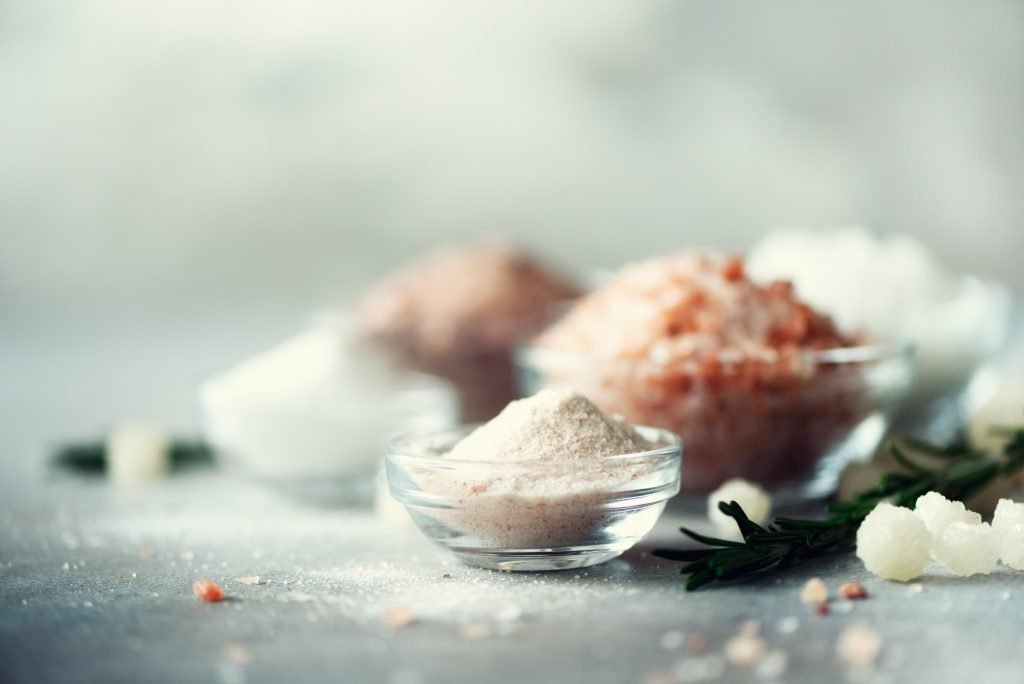
The concept that salt intake is associated with high blood pressure dates back to the early 1900s, when two French scientists, Ambard and Beauchard, mooted the idea on the basis of just six of their patients. Various doctors and researchers tried to prove the salt-blood-pressure theory over the years. In fact, one Lewis Kitchener Dahl was so keen to prove it that he bred successive generations of rats to become “salt-sensitive” so that the salty diets he fed them would have a detrimental effect on their blood pressure, since the “normal” rats he experimented on were not affected by a high-sodium diet. Subsequent researchers have repeatedly disproved the link, but salt continues to be demonised. The long-term historical data also contradicts the theory – just as people reduced their salt intake over time, high blood pressure and chronic disease in the West underwent a meteoric rise. In the 1960s, sugar began to be targeted (and rightly so) as the driver of hypertension and heart disease, although that uncomfortable and profit-threatening truth continues to meet with stubborn resistance.
So, the sweet spot for sodium intake is about 3-4 grams a day. Because salt is a mixture of sodium and chloride, that’s 7.5-10 grams of salt! Dipping below 3 grams of sodium (or 7.5 grams of salt) or going above 7 grams (17.5 grams of salt) has been linked to some serious health issues, like increased risk of stroke, heart attack, and even death. A large study involving almost 102,000 people in 17 countries shows that the risk of dying from anything can skyrocket below that recommended sodium intake range, while the risks increase more slowly and steadily above it. This is shown by the graph below from the study, which measured sodium excretion as an indicator of sodium intake.
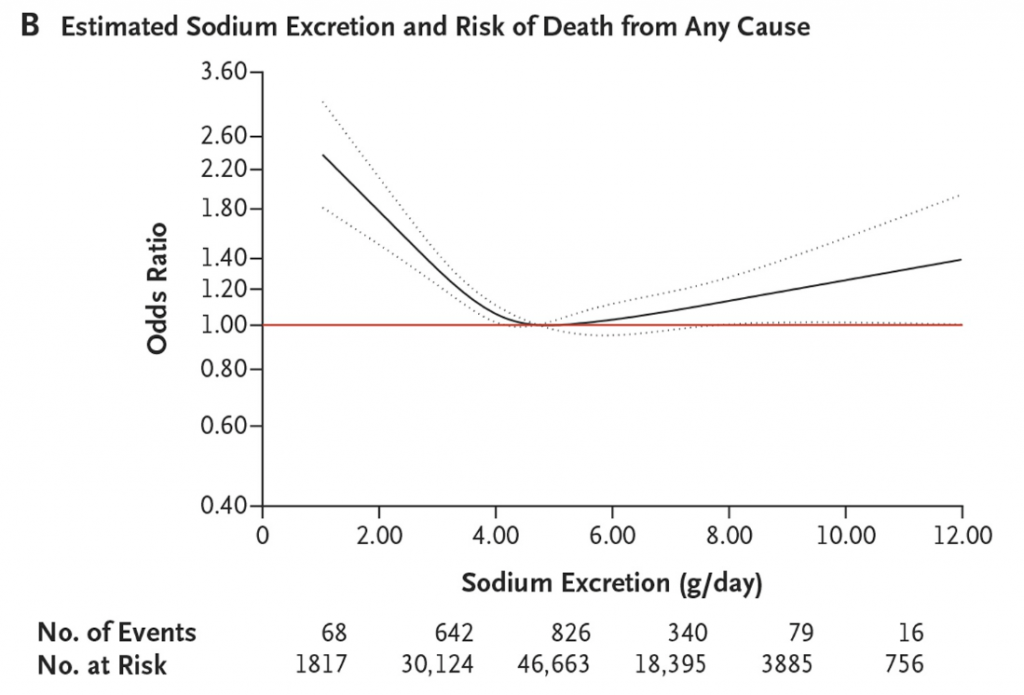
Too little salt also has a knock-on effect for your children. If you are not salting enough for yourself, then there’ll be even less to go around for two. Studies have found that a low-salt diet decreases fertility and the chances of getting pregnant. Babies born to mothers on a low-salt diet also tend to have a lower weight at birth.
Because your body will crave salt if you’re not getting enough in your meals, this can result in you eating more snacks outside of mealtimes in order to address the deficit. Unless you have a rare salt sensitivity – for instance, if you suffer from hyperaldosteronism, Cushing’s disease or Liddle syndrome, which increase sodium retention, then there’s less reason to be afraid of salt than is commonly thought. Are you avoiding salt in your cooking? If so, you may want to watch out for signs of low sodium levels. These can include things like dizziness, weak muscles, a faster-than-normal heartbeat, and low blood pressure.
Both high and low-salt diets can have an impact on our immune system – and the effects can be both positive and negative, due to numerous mechanisms that scientists are still unravelling.
As with all nutrients, it’s all about balance and synergy. Sodium works in tandem with its partner, potassium. Some populations, like the Japanese and the health-conscious Mormons and Seventh-Day Adventists, have lower rates of heart disease despite higher sodium intakes. The key? They also consume more potassium. As we know, too much sodium can be a problem for those with high blood pressure. Fortunately, potassium is known for its blood pressure-lowering abilities. That’s why doctors may advise their patients to steer clear of potassium supplements if they’re on blood-pressure-lowering medications.
How can you ensure you’re getting plenty of potassium?
Now for some more numbers! In the UK and Europe, they recommend getting 3,500 mg of potassium in your diet each day. Meanwhile, across the pond in the USA, the FDA recently upped the ante for potassium, increasing their recommended daily amount from 3,500 mg to 4,700 mg. At the same time, they also decreased the recommended intake of sodium, bringing it down from the already low, and arguably, risky 2,400 mg to 2,300 mg. Why the change? Well, a whopping half of all adult Americans have high blood pressure (50% of men and 44% of women) and this move towards more potassium and less sodium to improve the ratio is no doubt seen as part of the solution.
Potassium is one of the few nutrients nowadays that it’s actually possible to get in sufficient amounts from food. Good sources are leafy greens, chard, avocados, mushrooms, bananas, guava and kiwi fruit. A medium potato contains 20% of the DV for potassium. Because potatoes are quite high in starchy carbohydrates, I recommend cooking them and letting them cool down for a few hours or overnight in the fridge before reheating them. This turns the starch into a gut-friendly “resistant starch” that will not create a large spike in blood sugar.
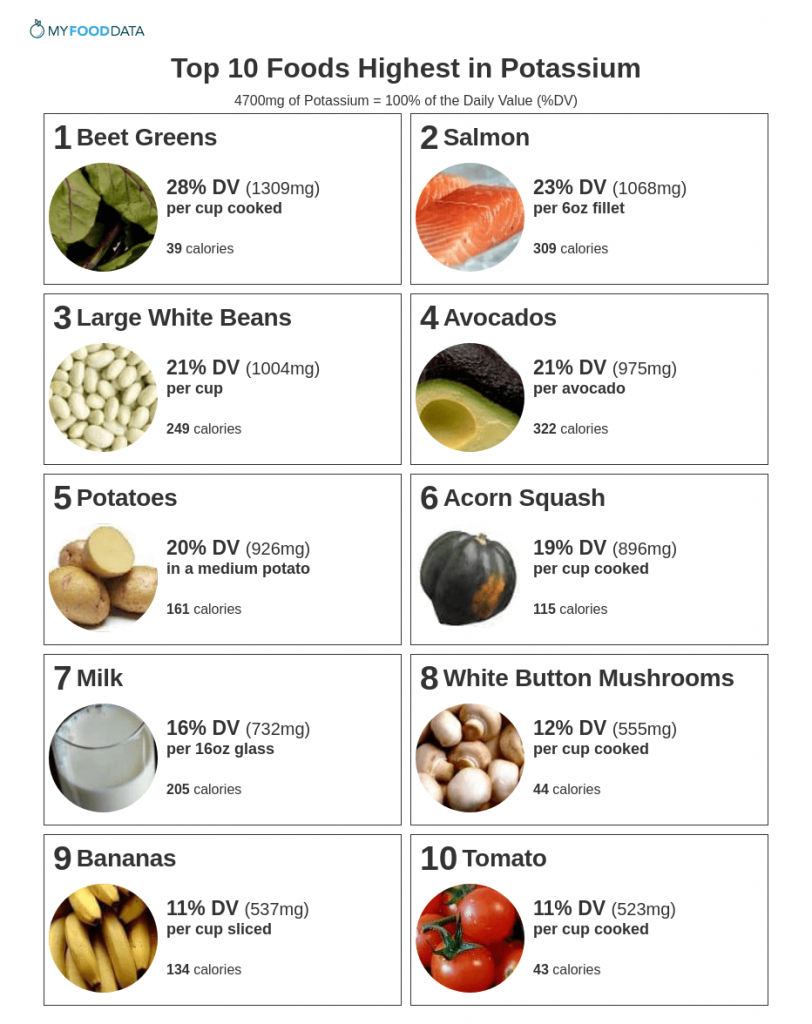
Which salt is best?
But which salt to choose? There’s Richmond Real Salt, Celtic Sea Salt, Himalayan Pink Salt, and of course, “good old” table salt. Each type of salt has its own unique selling points.
Sea salt, the hipster of salts, is often touted as the more natural and flavorful option, with a reputation for being chock-full of trace minerals like magnesium and potassium. But the mineral content of sea salt can vary depending on where it comes from, so you may not always get that mineral boost you’re hoping for.
Richmond Real Salt is the fancy friend of sea salt. It comes from an ancient seabed in Utah and promises to be a more natural, flavorful option compared to table salt. It’s got a unique mineral profile, so you’re getting a different taste compared to other sea salts.
Himalayan salt is the rock star of salts. This pink beauty is mined from the Khewra Salt Mine in Pakistan and boasts a high mineral content, including calcium, magnesium, and potassium. It’s marketed as a premium and healthier alternative to table salt, but it comes with a premium price tag.
Table salt is refined and often has iodine added to it to prevent thyroid problems, making it the most widely used form of salt. It’s also the most affordable option, but it’s highly processed, meaning it can lose some of its minerals and flavour compared to other types of salt. Refined table salt is definitely not the winner here, however. It often contains anti-caking agents to keep it from clumping up in your salt shaker, including the neurotoxin, sodium aluminium silicate. Although this ingredient is permitted in Europe, it’s a good idea to steer clear of table salt for this reason, not least to reduce your risk of developing Alzheimer’s! When salt absorbs water and sticks in the salt cellar, this is a clear sign that anti-caking agents haven’t been used. In the food industry, the unsavoury truth is that all sorts of tricks are played by these seasoned actors to maximise their profit margins, but who’d have thought that something as innocuous as table salt might be harbouring a neurotoxin, sitting innocently in a little shaker on your dining table!
My salt tip for the day: find a small spice jar (I use a tiny one that used to have mace in it), fill it with your favourite salt, and keep it in your handbag (or manbag) for when real salt is not on the restaurant menu.
If you are interested in delving into this topic more thoroughly, I recommend The Salt Fix by James DiNicolantonio.
Snack Attack! 10 healthy snack ideas for guilt-free nibbles
Snacking can often be a challenge when it comes to maintaining a healthy diet. However, with a little planning and mindfulness, snacking can actually be a great opportunity to fuel your body with nutrients and energy throughout the day. To make your snacks healthy, try to include a combination of protein, healthy fats, and fibre, which will help keep you feeling full and satisfied. Additionally, be mindful of portion sizes and always avoid processed or sugary snacks. Keep dried fruits to a minimum, as these have very concentrated sugars. Here are ten savoury snack ideas to keep you fuelled in between meals:
Apple pieces with almond butter
Celery pieces with crunchy almond butter and a quarter of a cherry tomato
Houmous and crudites (sliced pepper, celery, cucumber, carrot)
Organic green or kalamata olives
Roasted salted nuts: pecans, walnuts, macadamia, hazelnuts, almonds
Slice of seed bread (see recipe below) with butter and/or farmhouse pate, organic houmous with olive oil, or some slices of avocado – with a sprinkle of sea salt
Protein shake or green smoothie
Hard-boiled egg (with or without houmous)
Thin slice of roast beef (this is preferable to ham, which has preservatives in it), spread with your choice of mustard, and rolled around a gherkin
A bowl of superfood salad
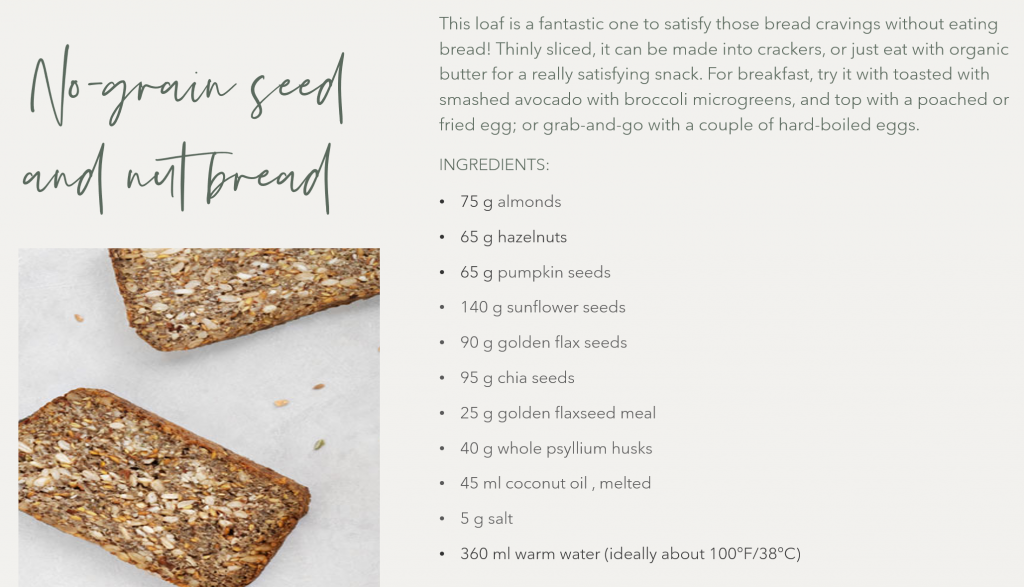
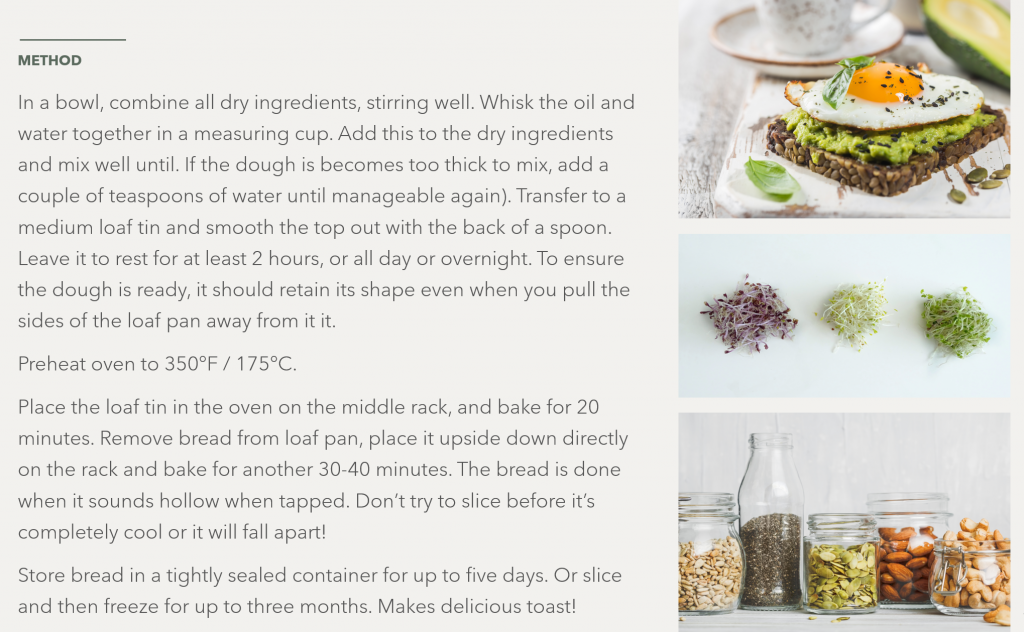
Please share this newsletter with anyone you think might be interested (with their permission!). And if you’re receiving this from someone else, don’t miss out on future nutrition nuggets: subscribe to this email newsletter here!


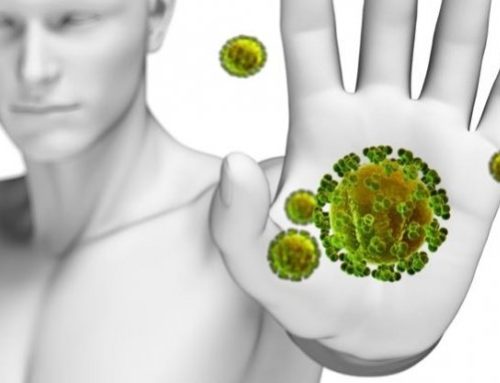
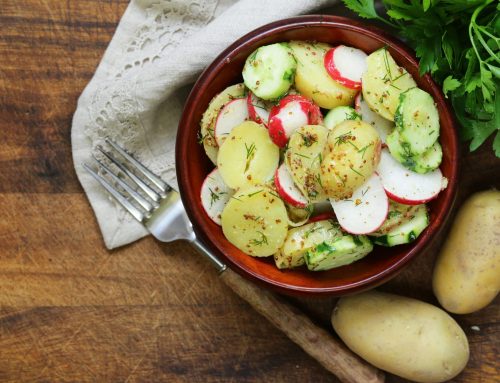
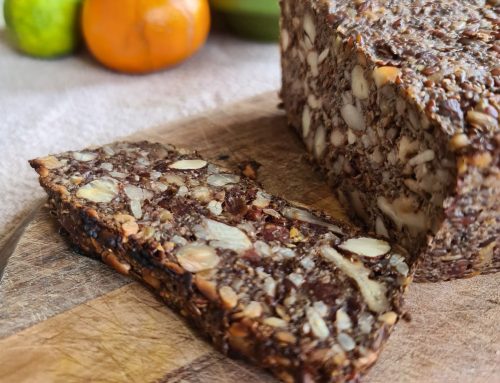
Leave A Comment